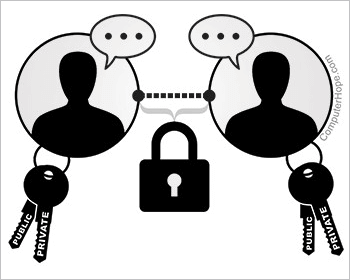End-to-end encryption

End-to-end encryption, also known as E2EE, is an encryption method which secures communications between two parties. It is designed to allow only the two communicating parties (the "ends" of the information path) to decrypt the transmitted information. If the information is intercepted by someone else, they cannot decipher it.
Not all encrypted communications qualify as "end-to-end" encryption. Some encrypted service providers store a copy of your encryption key, which permits them to decrypt and read your information. Your information is only secure if you trust the service provider to choose not to read your information, or expose your key to a third-party. End-to-end encryption removes this obligation of trust, because the service provider does not have an encryption key. The only parties who must be trusted with keys are the two people communicating.
An example of an app that features E2EE is Signal, which provides encrypted voice calls, video calls, and instant messaging on computers and mobile devices.
Asymmetric cryptography, Communications, End, Security terms
